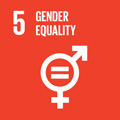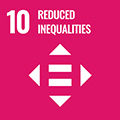- Docente: Andrea Gaucci
- Credits: 6
- SSD: L-ANT/01
- Language: Italian
- Teaching Mode: Traditional lectures
- Campus: Bologna
- Corso: Second cycle degree programme (LM) in Archaeology and Cultures of the Ancient World (cod. 8855)
Learning outcomes
Thanks to the course, students become acquainted with the historical and archaeological context of the Celts in Italy and are aware of the relationships between Celts and both Greeks and cultures of Preroman Italy.
Course contents
During the course, the specific theme of Celtic civilisation in Italy will be analysed in both historical and archaeological perspectives, with particular attention to the issues of the mobility of persons and groups and of the commercial and cultural flows within the framework of pre-Roman Italy and the transalpine world.
The first lesson will be intended to present the general programm of the course and the assessment method. Furthermore, a generale framework of the Archaeology of Preroman Italy will be offered, in which we can understand the phenomenon of the arrival of Celtic populations.
The course will examine the following topics:
1) History of studies and methodological framework; 2) Continental Europe Halstatt period; 3) Continental Europe laténian period; 4) The Golasecca Culture; 5) Individual mobility and cultural and commercial relations between northern Italy and the transalpine world between the 8th and 5th centuries BCE; 6) The historical invasion of the 4th century BCE; 7) Celtic epigraphy; 8-9) The Celts in the territories north of Po between 4th and 1st centuries BCE; 10-12) The occupation of the territory of the Etruscan city of Felsina-Bologna from the 4th century BCE: the cases of Bologna, Casalecchio di Reno, Marzabotto, Monterenzio and Monte Bibele in the Idice valley; 13) The Celts along the Adriatic coast between the 4th and the 1st centuries BCE.
Visits to sites and museums in the region, the dates of which will be communicated at the beginning of the Course, are an integral part of the learning process.
Lessons start with an academic quarter. Attendance to the class is highly recommended.
Readings/Bibliography
For a complete preparation, it is considered necessary to study the following texts:
Contributions on the social and commercial dynamics of the Celts between the Transalpine and Cisalpine world:
R.C. de Marinis, Principi e guerrieri nella civiltà di Golasecca, in Guerrieri, principi ed eroi fra il Danubio e il Po (Catalogo della Mostra), Trento 2004, pp. 293-303.
F.M. Gambari, I signori del commercio sulle vie d’acqua. Il ruolo degli scambi nella cultura di Golasecca, in Guerrieri, principi ed eroi fra il Danubio e il Po (Catalogo della Mostra), Trento 2004, pp. 305-313.
R.C. de Marinis, I principi celti, in Principi etruschi tra Mediterraneo ed Europa (Catalogo della Mostra, Bologna 2000-2001), Venezia 2000, pp. 379-389.
R.C. de Marinis, Aspetti degli influssi dell’espansione etrusca in Val padana verso la civiltà di Golasecca, in AnnFaina XV, 2008, pp. 115-146.
D. Vitali, I Celti in Italia, in Guerrieri, principi ed eroi fra il Danubio e il Po (Catalogo della Mostra), Trento 2004, pp. 315-329.
Contributions on the relationship between Celts and other Preroman cultures:
G. Gambacurta, A. Ruta Serafini, I Celti e il Veneto. Storie di culture a confronto, Ante quem, 2019, pp. 9-122, 165-173.
F. Marzatico, Il mondo retico fra Etruschi e Celti, in Les Celtes et le nord de l'Italie : premier et second âges du fer (Actes du XXXVIe colloque international de l'AFEAF, Vérone, 17 - 20 mai 2012), pp. 189-210.
G. Sassatelli, Celti ed Etruschi nell'Etruria padana e nell'Italia settentrionale, in Ocnus 11, 2003, pp. 231-257.
G. Sassatelli, Statuaria in pietra tra Etruschi e Celti, in L’indagine e la rima (Scritti per Lorenzo Braccesi), Hesperìa 30, 2013, pp.1225-1241.
For non-attending students, in addition to the texts indicated above, the following ones are also required:
S. Moscati, O.H. Frey, V. Kruta, B. Raftery, M. Szabó (a cura di), I Celti (Catalogo della mostra, Venezia 1991), Milano 1991: V. Kruta, La riscoperta degli antichi Celti, pp. 29-34; G. Dobesch, Le fonti letterarie, pp. 35-41; L. Kruta Poppi, Le fonti archeologiche, pp. 42-50; A.L. Prosdocimi, Lingua e scrittura dei primi Celti, pp. 51-59; O.-H. Frey, “I primi principi celti” nel VI secolo a.C., pp. 75-92; R.C. de Marinis, I Celti golasecchiani, pp. 93-102; O.-H. Frey, La formazione della cultura di La Tène nel V secolo a.C., pp. 127-146; V. Kruta, I Celti della prima espansione storica (IV secolo a.C.), pp. 195-213; L. Pauli, I passi alpini e le migrazioni celtiche, pp. 215-218; D. Vitali, I Celti in Italia, pp. 220-235; A. Rapin, L’armamento, pp. 321-331;
D. Vitali, I Celti a sud del Po, in G. Cuscito (a c.), I Celti nell'Alto Adriatico (Atti delle tre Giornate Internazionali di Studio, Trieste, 5-7 aprile 2001) («AAAd» 48), Trieste 2001, pp. 227-239.
L. Minarini, D. Vitali, L’arrivo dei Galli, in A. Donati, G. Sassatelli (a cura di), Storia di Bologna. Bologna nell'antichità, Bologna 2005, pp. 339-385.
Teaching methods
Teaching method consists in lessons, seminaries and visits to the main Museums of Emilia Romagna dealing with the subject of the course.
A few specialists of Celtic Archaeology in Italy will be involved during the course to speak about specific themes of the subject.Assessment methods
The exam consists in an oral test. It is required knowledge of indicated bibliography and of topics covered during lessons. Three general questions are the starting point of a more detailed discussion.
Attendance to the class is very helpful to pass the exam.
The overall evaluation will consider the following parameters:
- an excellent knowledge of the topics, the ability to analyse themes, to refer them by using the field-specific terminology and to discuss specific issues critically, arguing their own opinion, will be rewarded with an excellent mark.
- a mnemonic knowledge of the subject with the ability to analyse, with correct, although not always field-specific command of the language will be rewarded with a 'fair' mark.
- minimal knowledge of the subject will not be enough to pass the exam.
Teaching tools
Each lesson will be accompanied by presentation slides with a wide repertoire of images subsequently accessible through Insegnamenti OnLine - IOL.
Office hours
See the website of Andrea Gaucci
SDGs


This teaching activity contributes to the achievement of the Sustainable Development Goals of the UN 2030 Agenda.
